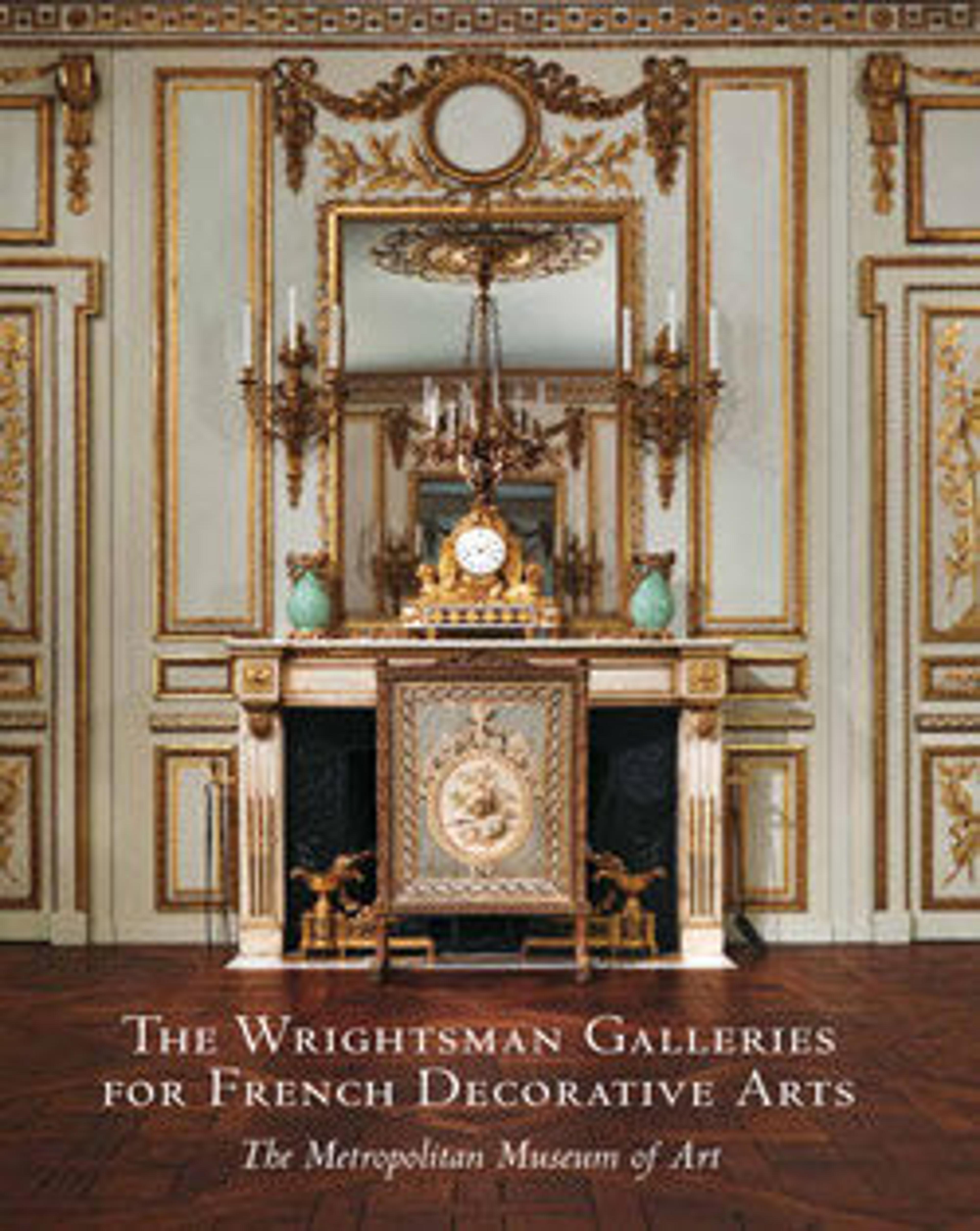Grand Salon from the Hôtel de Tessé, Paris
Following a disastrous fire, the residence at 1, quai Voltaire, was rebuilt between 1765 and 1768 at the behest of the widowed Marie-Charlotte de Béthune-Charost, comtesse de Tessé (1713–1783), and her son René Mans de Froulay (1736–1814), who had acquired the ruined building on the condition that a new mansion would be constructed. Although contemporary guidebooks credit the designs to the architect Pierre-Noël Rousset (1715–1793), it appears that the architect-contractor Louis Le Tellier (ca. 1700–1785) was primarily responsible for the creation of this Paris house with its dignified facade, still standing today on the left bank of the Seine, near the Pont du Carrousel. Since the accounts were not settled until April of 1772, it is likely that the interior decoration was not completed before then. The Museum’s paneling with its refined carving in the Neoclassical style was the work of woodworker Nicolas Huyot, a maître menuisier about whom little is known.
The carving was done by the sculptor Pierre Fixon or his son Louis-Pierre, or perhaps the two in collaboration. The Fixons may also have created the plaster overdoor reliefs representative of the four seasons. The marble sculptor Jean-Baptiste-Antoine Le Franc, who like the Fixons had worked with Le Tellier on various other projects, was responsible for the blue turquin marble mantelpiece, which is original to the room. The paneling acquired by the Museum decorated the largest of the formal reception rooms that were aligned, or laid out en enfilade, on the first floor of the building (the American second floor). Particularly beautiful are the coffered triumphal arches executed in perspective that frame the four mirrors and are crowned by laurel branches and floral wreaths. The 1783 inventory drawn up after the death of the comtesse de Tessé indicates that this room was called the Salle du Dais (Canopy Room) after the large tester or canopy that must have been mounted on the wall opposite the windows. Underneath this crimson damask tent, which was enriched with gold embroidered appliqués of the Tessé family coat of arms, the comtesse or her son presumably received their guests. Although not of royal birth, Madame de Tessé was the widow of René Mans de Froulay (1707–1742), comte de Tessé and marquis de Laverdin, as well as a Spanish grandee. In addition to a sixleaf folding chamber screen, the room was furnished with twenty-nine chairs all covered with different crimson fabrics, a small veneered bookcase, and a gilt-bronze cartel clock with movement by Voisin. Several family portraits and two tapestries of landscape scenes were hung on the side walls. The 1783 inventory of the hôtel did not list any curtains in the room; perhaps none were hung, in order not to obscure the lovely view from the three large windows of the Seine and the Louvre and Tuileries palaces across the water.
Artwork Details
- Title: Grand Salon from the Hôtel de Tessé, Paris
- Maker: Made by Nicolas Huyot (1700–1791)
- Maker: Carved by Pierre Fixon (active 1748–88)
- Maker: and/or his son Louis-Pierre Fixon (born 1748)
- Maker: Chimneypiece by Jean-Baptiste-Antoine Lefranc
- Maker: Contracted by Louis Le Tellier (ca. 1700–1785)
- Date: ca. 1768–72, with later additions
- Culture: French, Paris
- Medium: Carved, painted, and gilded oak; marble; plaster
- Dimensions: H. of room 16 ft. (4.87 m), W. 29 ft. 6-1/2 in. (9 m), L. 33 ft. 7-1/2 in. (10.25 m)
- Classification: Woodwork
- Credit Line: Gift of Mrs. Herbert N. Straus, 1942
- Object Number: 42.203.1
- Curatorial Department: European Sculpture and Decorative Arts
Audio
110. Grand Salon from the Hôtel de Tessé, Part 1
Highlights Tour
이곳은 앞서 보셨던 초상화의 주인공들이 살던 곳입니다. 18세기 프랑스의 실내 장식은 화려하기로 유명하죠. 이 방에도 크리스탈 샹들리에와 화려한 가구들, 호화로운 장식과 금박을 단 목재 벽판이 가득합니다. 이렇게 화려한 분위기에 익숙하지 않은 사람들은 이러한 광경을 의심의 눈초리로 바라보곤 했습니다. 특히 당시 미국의 청교도들의 눈에는 더욱 이상해 보였죠. 유럽으로 두 번의 여행을 떠났던 존 애덤스 전 미국 대통령은 1778년에 남긴 글에서 ‘우아하고 화려해질수록 고결함과는 거리가 멀어진다고 생각한다’ 라고 적었습니다. 사람들을 유혹하고 매혹하기 위한 장식품들이 가득한 이런 방 안에서 애덤스는 혼란을 느꼈을 것입니다. 앞서 보셨던 르네상스 시대 이탈리아의 서재와는 달리 이곳은 다른 사람들과 함께 하는 공간입니다. 특별한 손님을 모시는 연회장이죠. 모든 장식은 우아하고 섬세합니다. 이 방에 있는 가구를 보면 18세기 귀족들이 어떤 가치를 지향했는지 알 수 있습니다. 벽에 걸려 있는 하프를 켜는 여인의 초상화는 당대 귀족들의 음악적 취향을 반영하고 있습니다. 벽난로 앞에 있는 멧돼지와 수사슴은 사냥을 의미합니다. 벽난로 위에 있는 선반에 있는 오래된 시계에는 사랑의 신인 에로스가 있습니다. 당시에는 새로운 지식과 재치도 중요했습니다. 왼쪽 벽에 있는 탁자 위에는 ‘드니 디드로’의 초상화가 걸려 있습니다. 유명한 학자였던 그는 계몽주의 사상가이기도 했습니다. 이 방에 있는 여러 가지 보물에 대한 설명을 들으시려면 재생 버튼을 누르십시오.
Listen to more about this artwork
More Artwork
Research Resources
The Met provides unparalleled resources for research and welcomes an international community of students and scholars. The Met's Open Access API is where creators and researchers can connect to the The Met collection. Open Access data and public domain images are available for unrestricted commercial and noncommercial use without permission or fee.
To request images under copyright and other restrictions, please use this Image Request form.
Feedback
We continue to research and examine historical and cultural context for objects in The Met collection. If you have comments or questions about this object record, please contact us using the form below. The Museum looks forward to receiving your comments.
